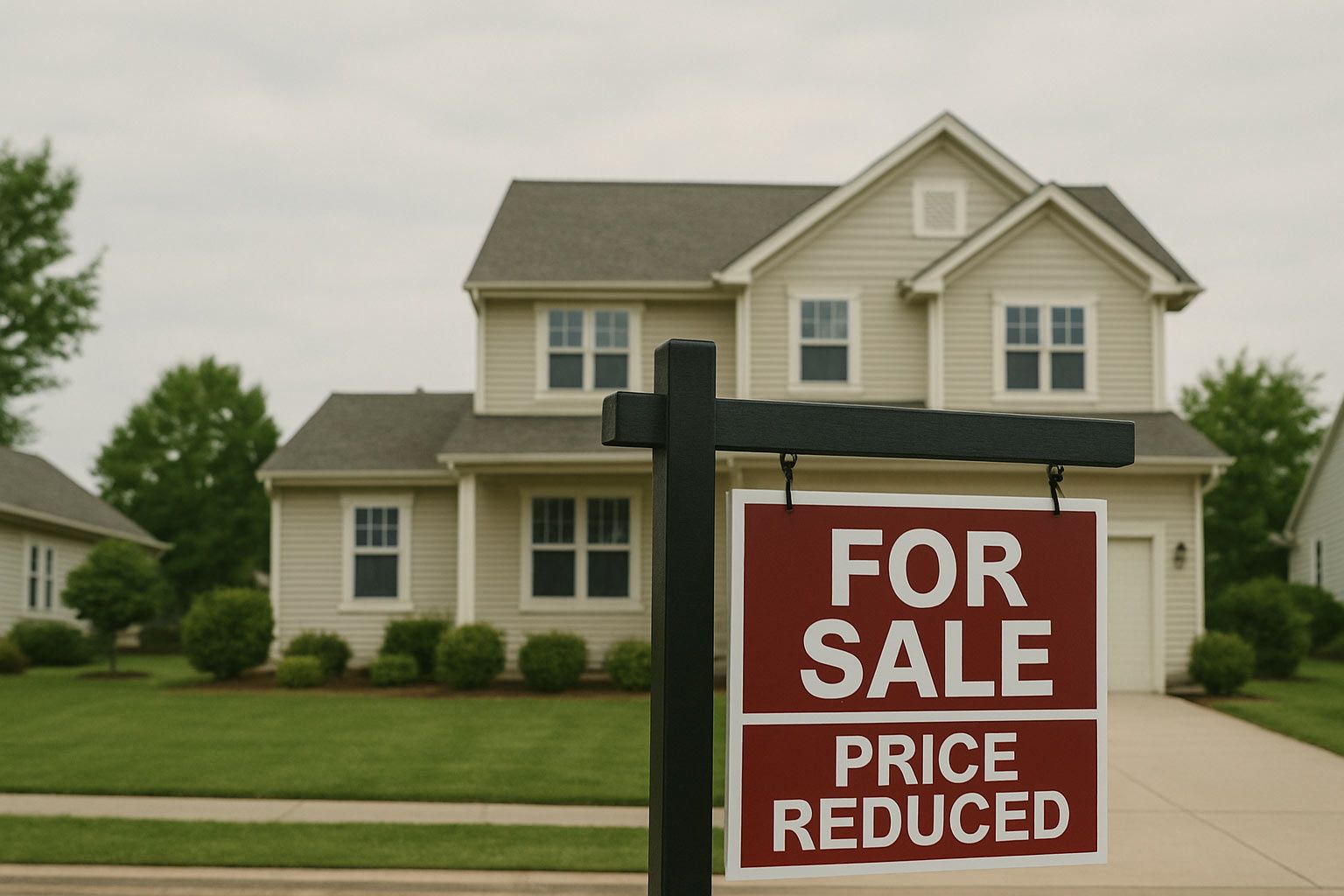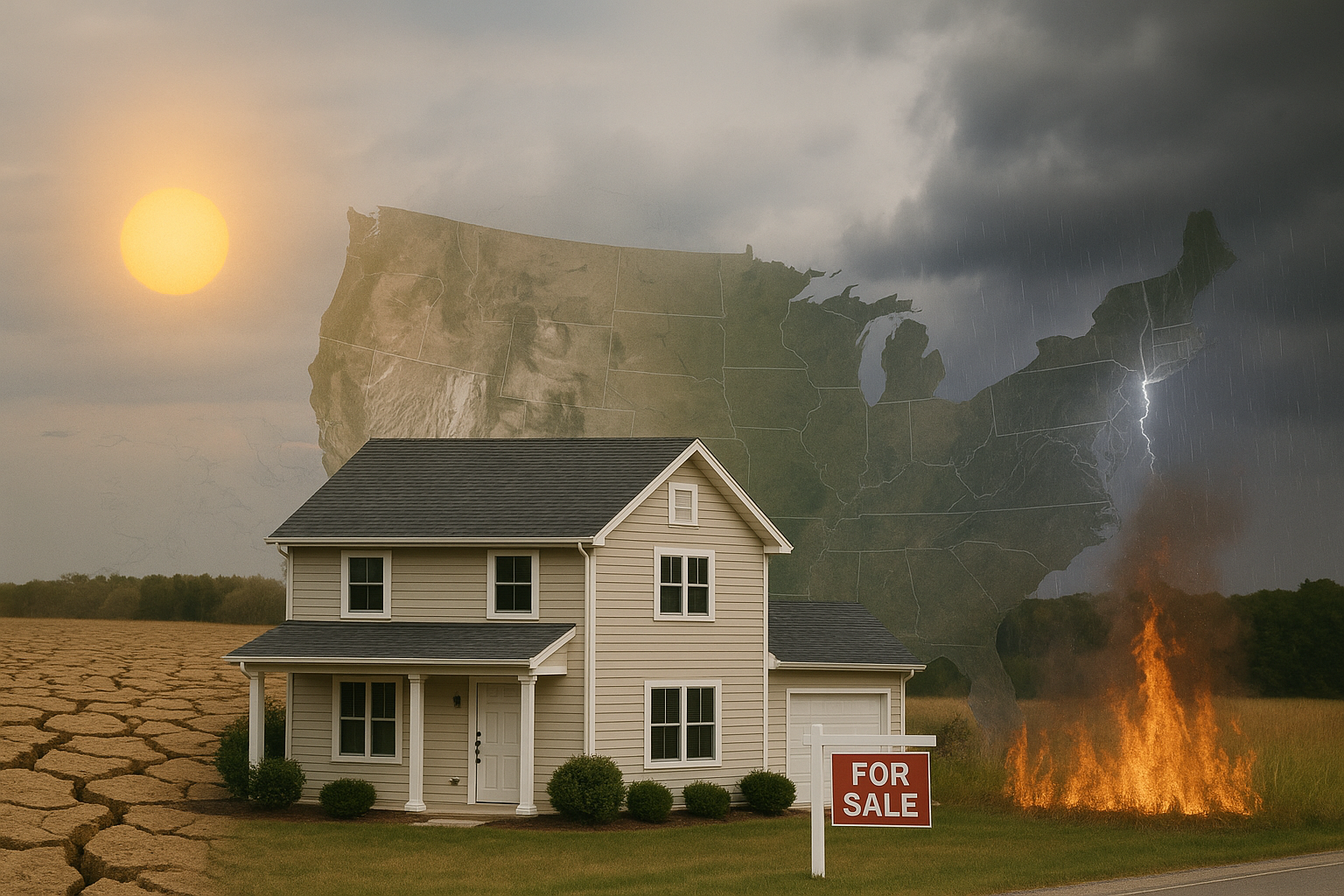Buyers Are Back in Charge: How the Cooling Real Estate Market is Rewriting the Rules
For years, the U.S. housing market felt like the Wild West for anyone trying to buy. Homes were snapped up in hours, bidding wars added tens of thousands to the price tag, and buyers were waiving inspections, contingencies, and even common sense just to stand a chance.

But in a surprising twist, that frenzied era is showing signs of ending. According to fresh data, the majority of homes in the U.S. are now selling below asking price — a shift that hasn’t happened on this scale in years. The playing field is finally leveling, and for buyers, it feels like an exhale after holding their breath for far too long.
From Seller’s Dream to Buyer’s Opportunity
To understand why this moment feels so different, you have to take a look back at the conditions that created the seller’s dream market.
When the pandemic hit, the Federal Reserve slashed interest rates to near zero. Mortgage rates dipped under 3% — something many economists never expected to see in their lifetimes. At the same time, lockdowns had millions rethinking their living spaces.
- City dwellers sought more space in the suburbs.
- With remote work, people were no longer tied to their office locations, making it possible to consider living in entirely different states.
- Homeowners were hesitant to list, fearing uncertainty — so inventory plummeted.
It was the perfect recipe for competition. Sellers didn’t just have leverage — they had control. They could list a home at an ambitious price and still watch offers flood in, sometimes well over ask.
The Shift Begins
Fast forward to today, and the tide has turned. Mortgage rates have climbed to levels not seen in over two decades. According to Freddie Mac, the average 30-year fixed rate has hovered between 6% and 7% this year — more than double the rates of 2021.
For the average homebuyer, that difference can add hundreds, even thousands, to the monthly mortgage payment. A $400,000 home that felt comfortable at 3% interest may feel out of reach at 7%.
The result? Fewer bidding wars. Longer listing times. And more sellers coming down on price to get deals done.
A Tale of Two Markets
It’s important to note that this shift isn’t uniform across the country.
- Cooling Fast: Markets like Phoenix, Austin, and Boise — which saw meteoric price jumps during the pandemic — are now experiencing some of the steepest drops in list-to-sale prices.
- Still Competitive: In contrast, parts of the Northeast and Midwest, where price growth was steadier and more sustainable, are seeing less dramatic changes.
Even so, the national trend is clear: more homes are closing for less than the sticker price.
Real People, Real Relief
For buyers, this change is more than just numbers on a spreadsheet — it’s a change in experience.
Take
Nina and Marcus, first-time buyers in Minneapolis. In 2022, they lost out on seven different homes, each time to higher offers or cash buyers. “We were burning out,” Nina says. “Every weekend there were open houses, and every Monday was disappointing.”
This summer, they toured a home listed at $385,000. They liked it but knew it needed some updates. With guidance from their agent, they offered $365,000 — and the sellers accepted without a counter. “We still can’t believe it,” Marcus says. “We actually had time to think before making the offer.”
On the flip side, James and Laura, sellers in Denver, listed their home at $750,000 in May expecting multiple offers. Two weeks later, they’d had just a handful of showings. “Our agent told us this is just the market now — we had to lower the price,” Laura says. They eventually sold for $730,000 after offering a $5,000 credit toward closing costs.
Expert Take: Why This Is Happening
According to Dr. Elaine Harper, a housing economist with the Urban Markets Institute, the cooling market is a natural correction after years of unsustainable growth.
“We’re not looking at a housing crash — this isn’t 2008,” Harper says. “What we’re seeing is prices adjusting to meet the reality of higher borrowing costs and increased inventory. It’s a recalibration, not a collapse.”
What “Below Asking” Really Means
Selling below asking isn’t always a sign that home values are tanking. Often, it’s a sign that sellers overshot from the start.
Example: A home worth $500,000 might be listed for $525,000 in hopes of catching an overeager buyer. In 2021, that strategy often worked. In 2025, buyers are more cautious. The home might sell for $495,000 — still strong, but technically “below ask.”
For buyers, the takeaway is this: you have room to negotiate — not just on price, but also on repairs, closing costs, and timelines.
Checklist for Buyers in Today’s Market
- Get Pre-Approved — Know exactly what you can afford, especially with rates fluctuating.
- Don’t Rush — You have time to shop and compare.
- Negotiate Everything — Price, repairs, seller credits, even appliances or furniture.
- Use Contingencies — Protect yourself with inspection and appraisal clauses.
- Think About Resale — Even if you plan to stay long-term, buy in a location with solid value history.
Checklist for Sellers Adjusting to the Shift
- Price Realistically — Look at comparable recent sales, not just listings.
- Invest in Presentation — Staging, fresh paint, and good photography can make a big difference.
- Be Flexible — Be open to concessions like closing cost credits.
- Focus on Condition — Buyers are less willing to take on big repairs.
- Understand Timing — Homes may take longer to sell than in past years.
The Emotional Landscape
Perhaps the most overlooked part of this shift is how it’s affecting people emotionally.
For buyers, the pressure cooker environment has cooled. There’s less of the panicked “If I don’t buy now, I never will” energy. Decisions feel more thoughtful.
For sellers, the emotional adjustment can be harder. If you’ve heard neighbors brag about selling in a weekend for $50,000 over ask, it’s tough to accept a lower price or a slower sale. But real estate veterans will tell you — markets are cyclical, and this is simply part of the rhythm.
What’s Next for the Market?
There are two main scenarios experts are watching:
- If rates drop: More buyers may re-enter the market, possibly heating competition again, especially in desirable metro areas.
- If rates hold or climb: The cooling trend could deepen, giving buyers even more negotiating power.
Either way, the days of sellers holding all the cards appear to be behind us — at least for now.
Final Word
The U.S. housing market is in the midst of a rare role reversal. Buyers, after years of feeling squeezed out, are finally in a position to negotiate — and win.
For those who’ve been waiting on the sidelines, this could be the window they’ve been hoping for. For sellers, it’s a reminder that flexibility and realism are the keys to getting deals done in 2025.
As Dr. Harper puts it, “We’re moving toward a healthier, more balanced market. And in the long run, that’s good for everyone.”
Share this post









